See Also
- My Favorite Hotels in Florence
- My Favorite Family Hotels in Florence
- My Favorite Places to Stay in Florence
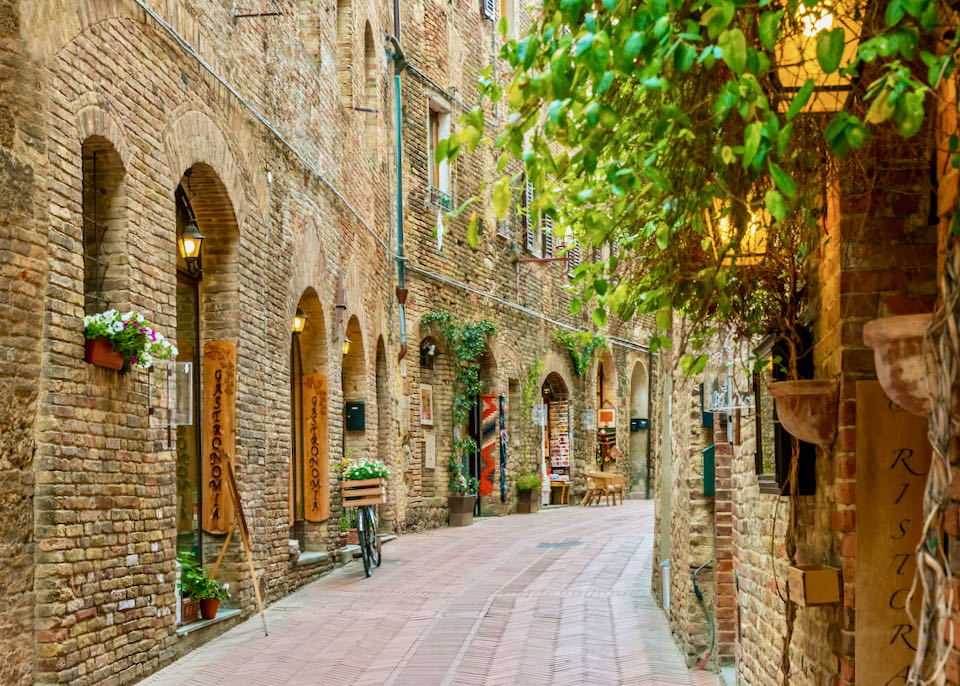
San Gimignano
San Gimignano is also known as the Town of Fine Towers; one of my favorite small towns in Italy and world-renowned for its tall, medieval tower homes that fill the skyline. A UNESCO world heritage site, San Gimi’s walled, hilltop downtown once housed 72 towers – built as displays of wealth among rival aristocratic families during the 13th and 14th centuries. Today only 14 towers remain; the tallest, Torre Grossa, is open for visitors to climb and enjoy panoramic views of the old town and Tuscan countryside. San Gimignano also houses a gorgeous Romanesque church with stunning frescoes, an archaeological museum, and several local vineyards known for their Vernaccia white wine.
San Gimignano is located about 23 miles southeast of Florence (road distance is 35 miles), and is easy to access from Florence by car, bus, or train.
How to Get from Florence to San Gimignano
Tours to San Gimignano from Florence
The easiest and most enjoyable way to do a day trip to San Gimignana is by joining a wine tour from Florence. Most tours involve multiple stops in the area (all worthwhile and interesting) and last half the day or full day. The Full–Day Countryside Tour with Lunch from Florence is excellent and good value.
The Fastest Way to San Gimignano from Florence: Car
It’s possible to reach the town using public transportation, though there is no direct train; instead, travelers will need to take either two buses or a train then a bus (both with a transfer in Poggibonsi). Public transportation takes at least an hour and a half one-way, leaving less time for sightseeing. Renting a car in Florence is a great way to explore the surrounding countryside. To maximize your time spent exploring San Gimignano, plan on driving to San Gimignana directly.
The Cheapest Way to San Gimignano from Florence: Bus
Aside from driving yourself, taking the bus is the best way to get from Florence to San Gimignano. While busing is not as quick as driving, it’s cheaper (about 8€ per one-way ticket) and easier than taking the train to Poggibonsi and busing from there. The journey takes about 90 minutes each way, including the bus change in Poggibonsi.
Catch the Florence–Poggibonsi bus at the bus depot in Via Santa Caterina da Siena 15, adjacent to the Santa Maria Novella train station – to the left, if you’re outside facing the station. When purchasing tickets, look for BusItalia Nord Line 131 Florence–Siena. These buses run every hour or so Monday through Saturday, and with lesser frequency on Sundays and holidays. Tickets can be purchased on the day of travel.
The trip from Florence to Poggibonsi takes about 50 minutes, after which you’ll need to get off of that bus and onto Bus 130 San Gimignano-Siena. The wait time between buses is generally around 15 minutes, and then it’s another 25 minutes of bus travel from Poggibonsi to San Gimignano.
Due to the 90 minute journey, it’s a good idea to plan to leave Florence early in the morning (and check the schedule at the bus station the day before).
Day Trip to San Gimignano
Most attractions in San Gimignano are near the Piazza della Cisterna, the triangle-shaped main “square” that takes its name from the cistern at its heart, built in the mid-14th century. This is the piazza on a Monday during the low season. Catching the piazza this empty is a rare occasion.
Thursdays and Saturdays are market days in all of the Piazzas (Cisterna, Duomo, and Erbe), with a livelier, bustling atmosphere, especially during the high season. The cistern itself is a popular gathering spot on market days.
Thursday is the craft market, filled with local artisans and food vendors, while the Saturday market features fresh produce.
Piazza della Cisterna is also home to the award-winning Gelateria Dondoli, whose original gelatos have won regional, national, and international awards for years on end.
Head north up the narrow Via San Matteo, lined with leather goods, butchers, cheese, and souvenir shops to reach the Piazza del Duomo.
This street opens up to the Piazza del Duomo, which is flanked with towers on the east. From the left in this photo, there are the Two Towers (Torri dei Salvucci), Torre Chigi in the middle (half red brick, half grey stone), and Torre Rognosa (the second tallest tower in the city).
The Duomo di San Gimignano, also called the Collegiate Church, sits to the west and dates back to the 12th century. It doesn’t look like much from the outside, and many travelers don’t even visit the inside, but its fresco cycles and interior architecture are stunning.
Most of the construction took place during the 13th century, with updates in the 14th. The interior is built in the shape of a Latin Cross, and features Romanesque arches and black and white striped marble, with lapis lazuli vaulted ceilings studded with gold stars. The walls feature original frescoes depicting scenes from the Old and New Testaments.
The frescoes were painted by various masters, including Barolo di Fredi and Lippo Memmi, among others. Amazingly, these frescoes have never been restored and have retained their vivid colors throughout the centuries.
There are also two small Renaissance chapels that were added later to the church. The most important one is the Chapel of St Fina, patron saint of disabled people. Her bones are kept in the altar here, along with the plank she lay on throughout her illness until her death. The walls are decorated with frescoes by Domenico Ghirlandaio.
Right next to the church is the Palazzo Comunale (Municipal Palace) which includes the Torre Grossa, the tallest tower in the city and the only one open to the public, along with the Pinacoteca art museum.
Most people head straight to the tower, but if you have time it’s worth it to visit the Palazzo’s frescoed rooms and the Pinacoteca, which houses gorgeous Florentine and Sienese artworks from the 13th through 15th centuries.
The beginning of the climb is along the original stairway.
But the bulk of the hike is up a modern stairway, with a projector screen and music setting the mood. The total height is 54 meters, spread over 218 steps. There is no elevator access to the top.
Once at the top, visitors can enjoy breathtaking views of San Gimignano’s towers, tile rooftops, narrow lanes, and the Tuscan countryside between Florence and Siena.
The bell at the top of Torre Grossa.
There is another great viewpoint of San Gimignano at Rocca di Montestaffoli, the ruins of a 14thcentury castle and fortress. One turret is open to the public, but it’s small and can get crowded, especially in the high season when the sightseeing tours stop here.
View of San Gimignano’s towers, rooftops, and Tuscan farms and vineyards from the top of the turret.
Heading back into town, be sure to stop in at San Gimignano 1300 to see the ceramic recreation of the city as it was in the year 1300, complete with handcrafted replicas of all 72 towers, molded from over one ton of clay.
Detail of the model buildings.
They also have a larger tower cross section, to show the internal layout. Here you can see ladders leading through the floors rather than stairs. The museum is free, though they welcome donations.
Next, visit the Civic Museum complex in the former Conservatorio di Santa Chiara, featuring three museums in one; each museum is small, and one ticket covers entry to all three museums. The first floor houses the Ancient Herb Pharmacy…
…And the Archaeological Museum, featuring Etruscan, Roman, and Medieval art.
The second floor houses the Modern and Contemporary Art Museum.
If you have time and a strong stomach, make a stop at the Museum of Torture, which has not only ancient torture devices but also a selection of medieval military weapons and replicas of many of Leonardo Da Vinci’s war machines, including a full-sized tank.
Finish the day with a taste of the local Vernaccia white wine, but do not waste your time at the tourist trap wine museum in town. Instead visit one of the local vineyards just outside of town, such as Pietraserena or Tenuta Torciano, for a tasting with a view.
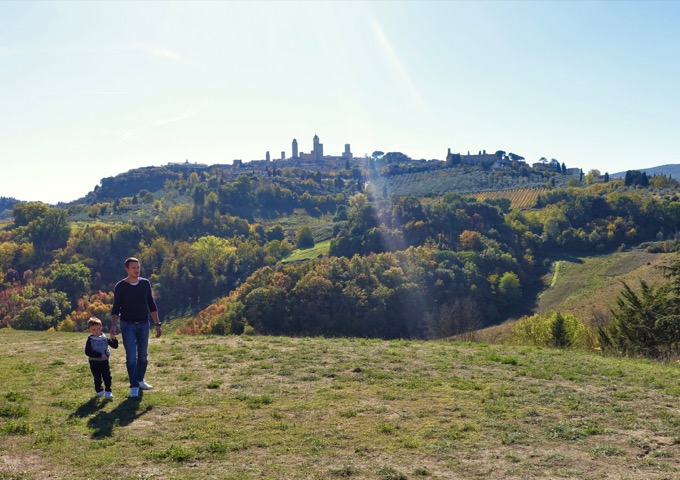
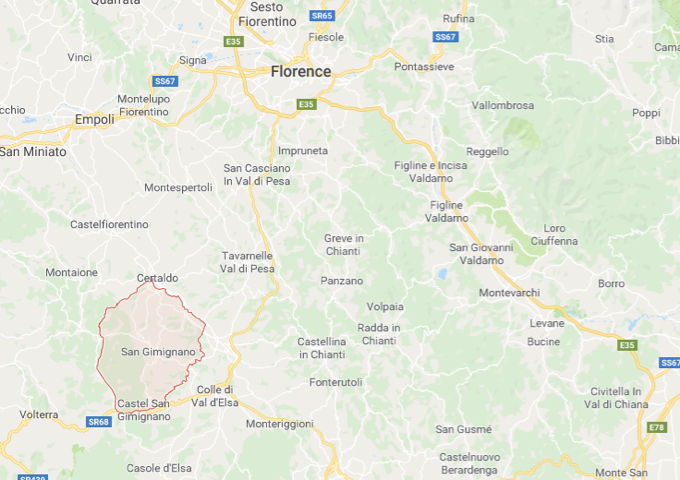
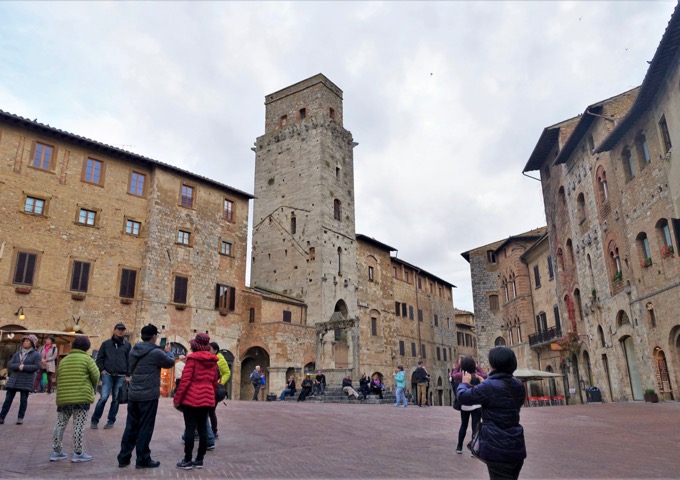
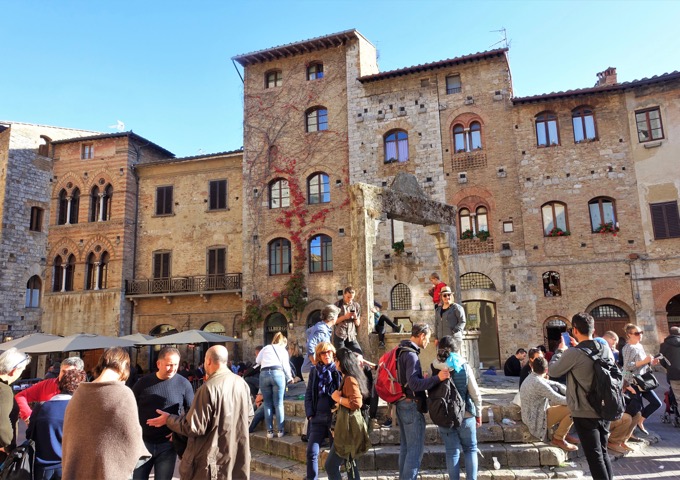
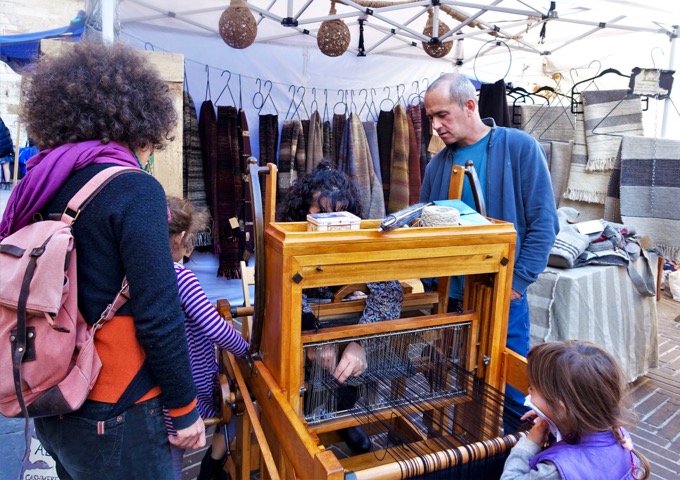
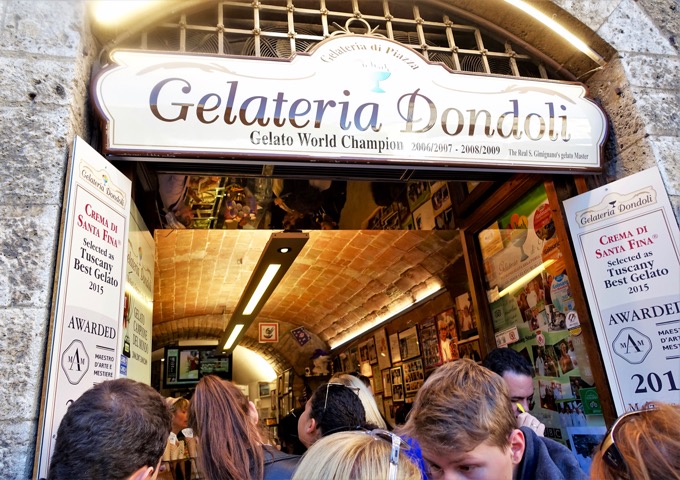
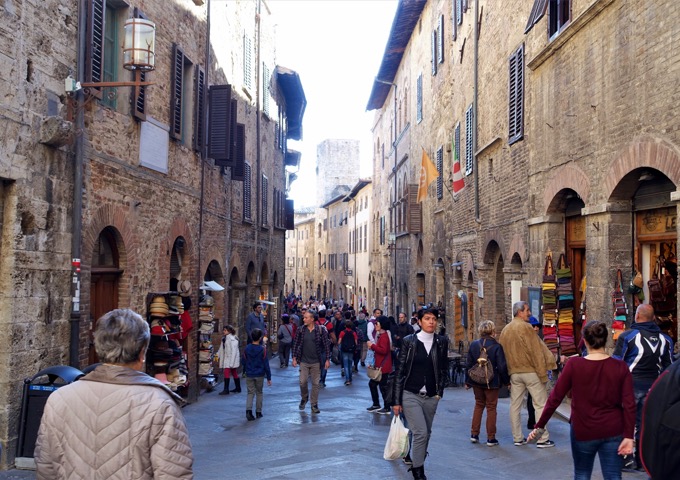
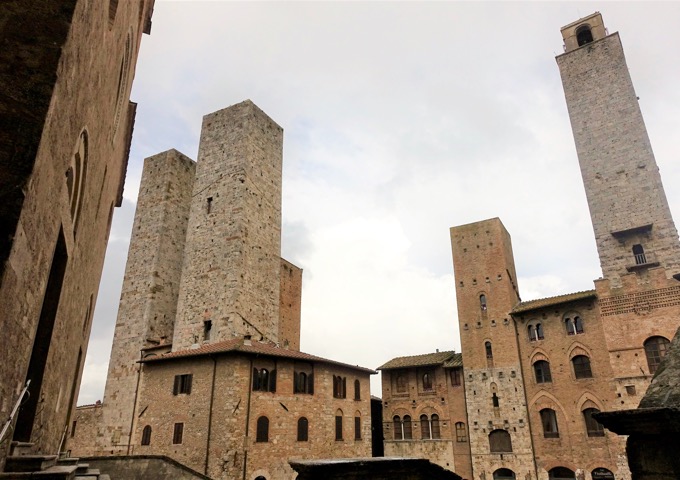
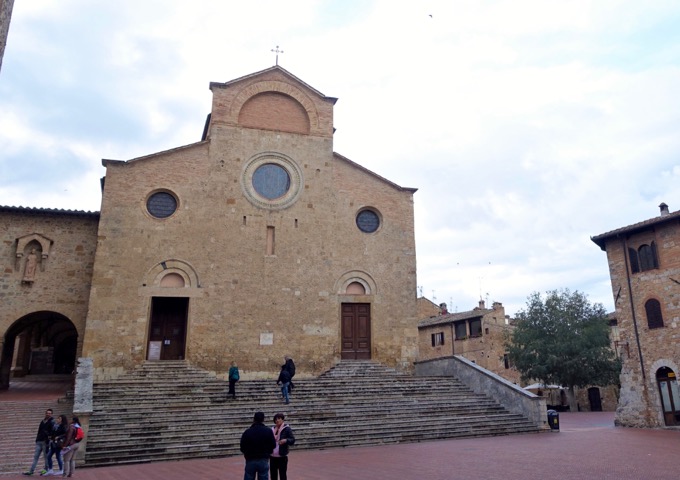
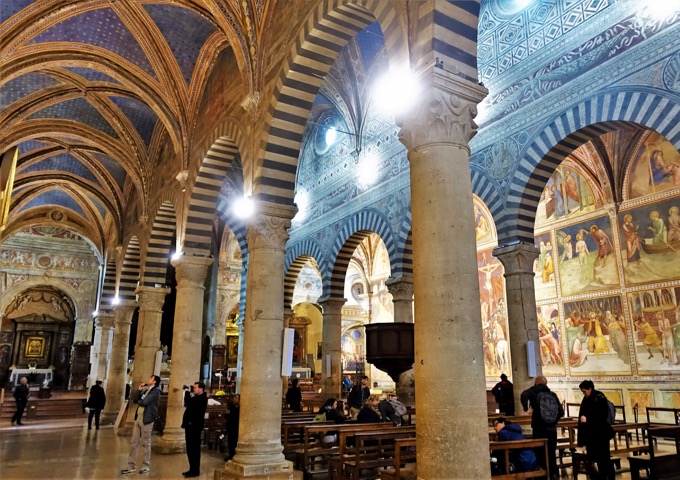
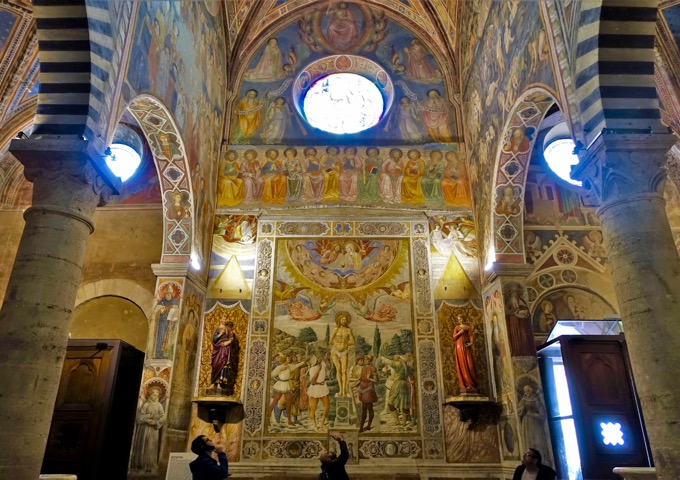
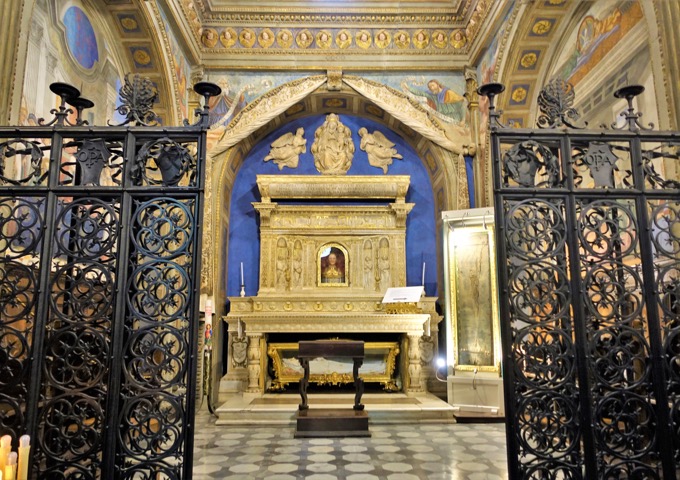
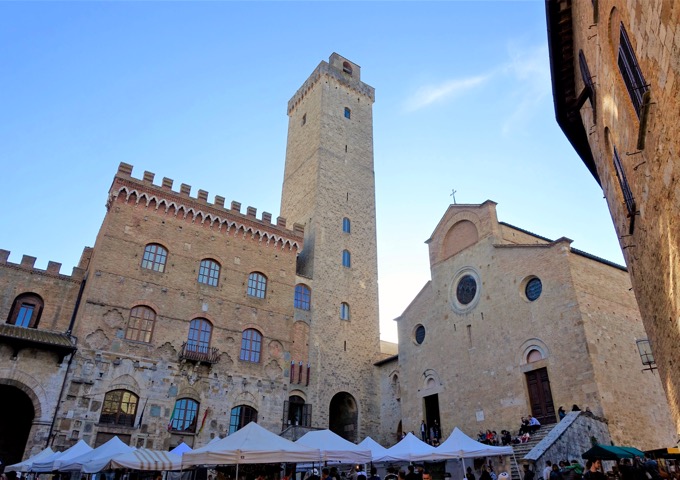
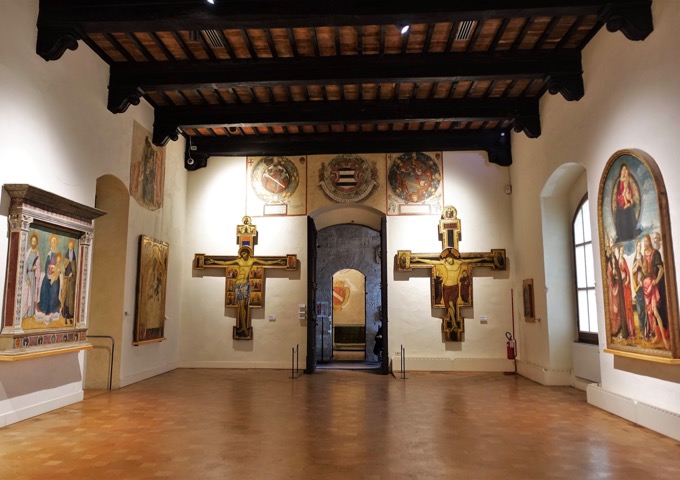
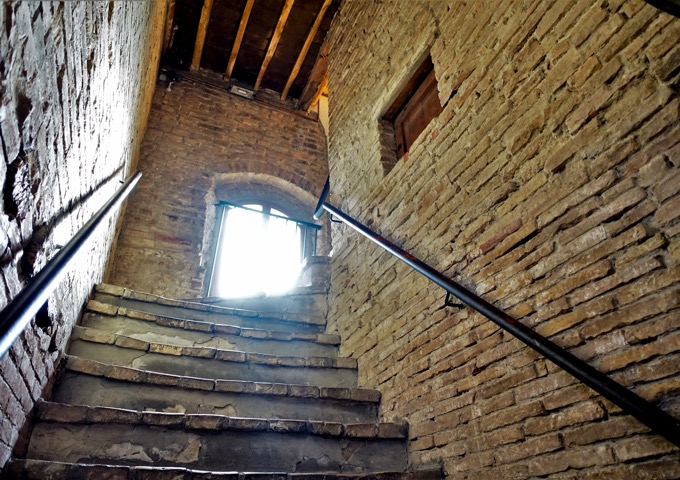
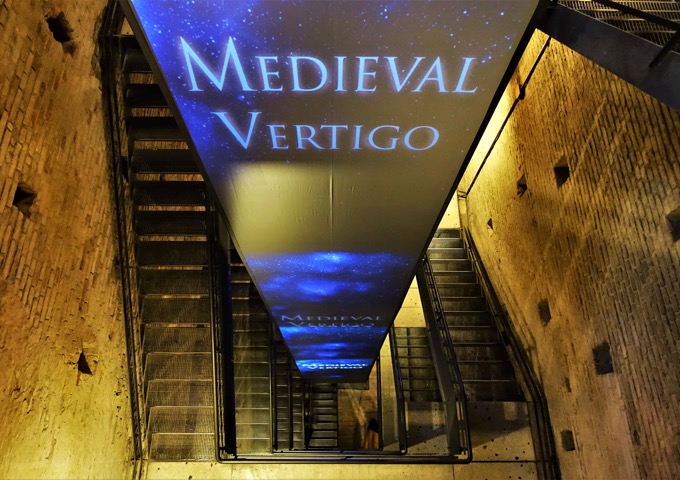
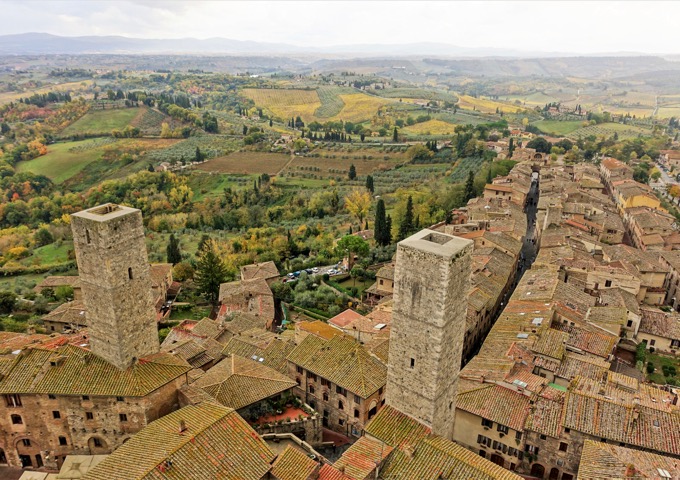
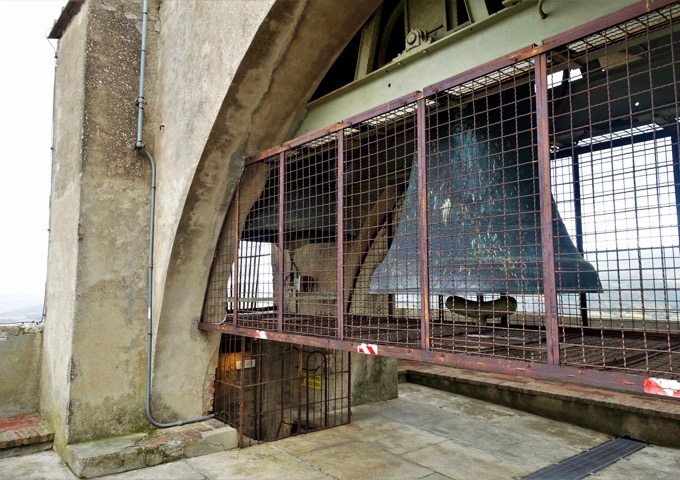
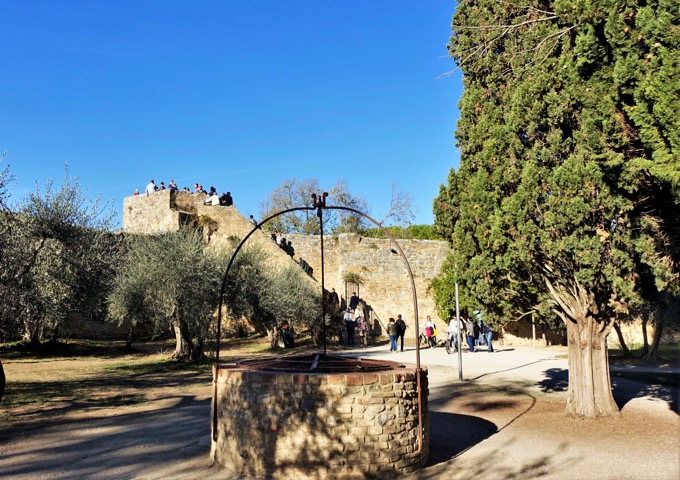
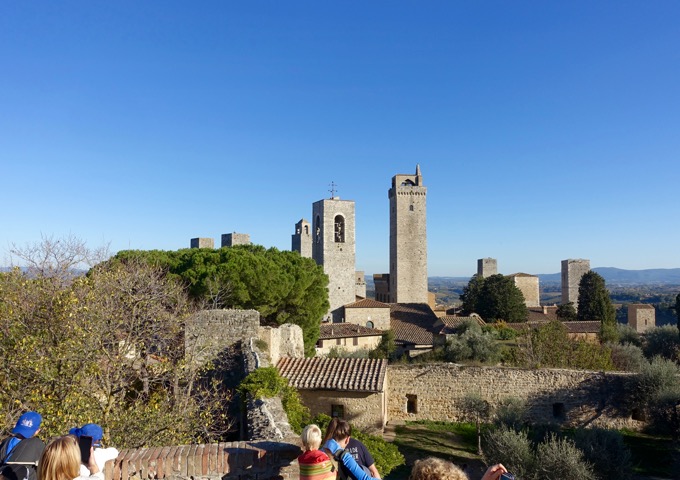
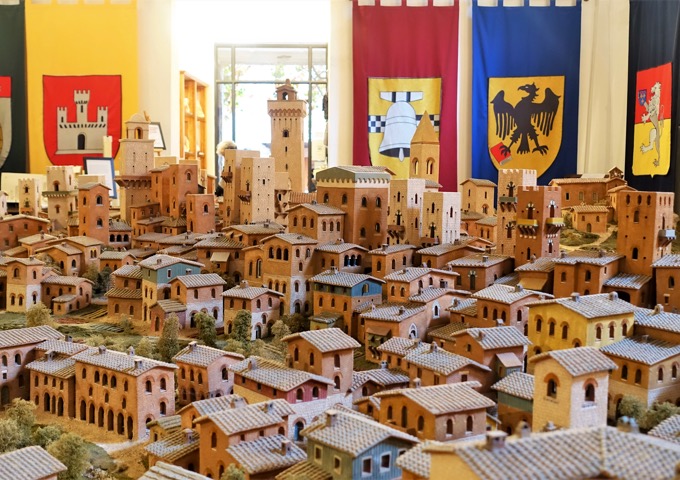
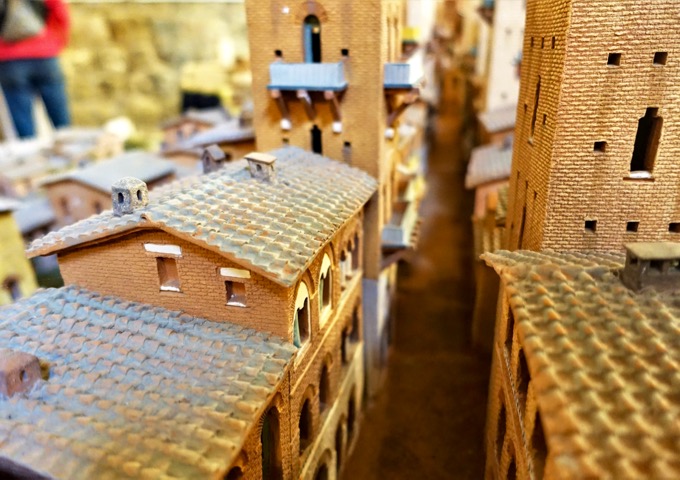
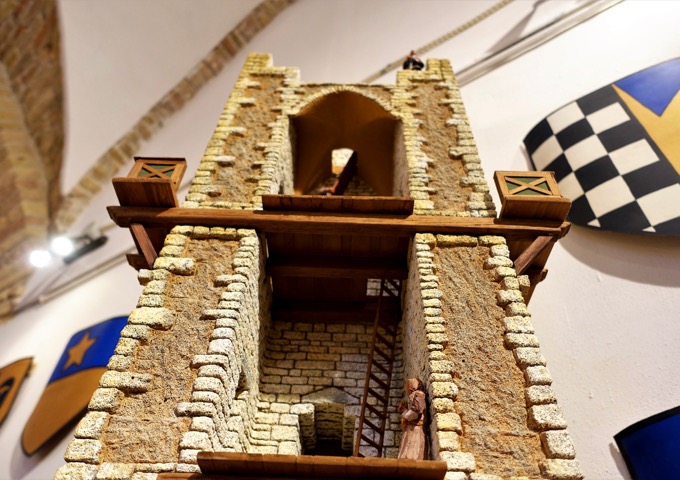
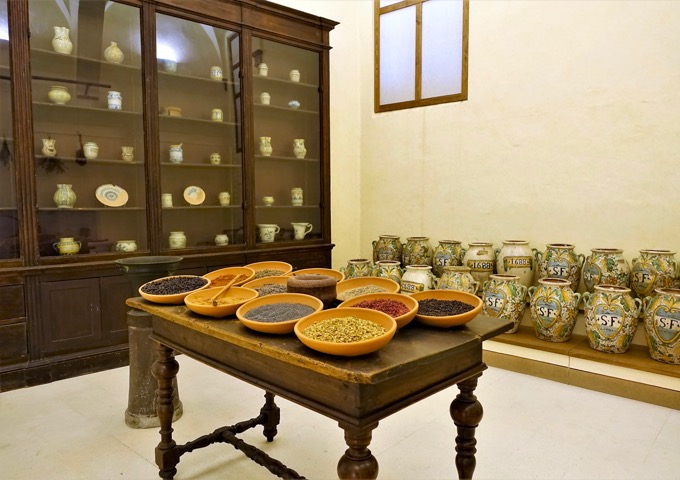
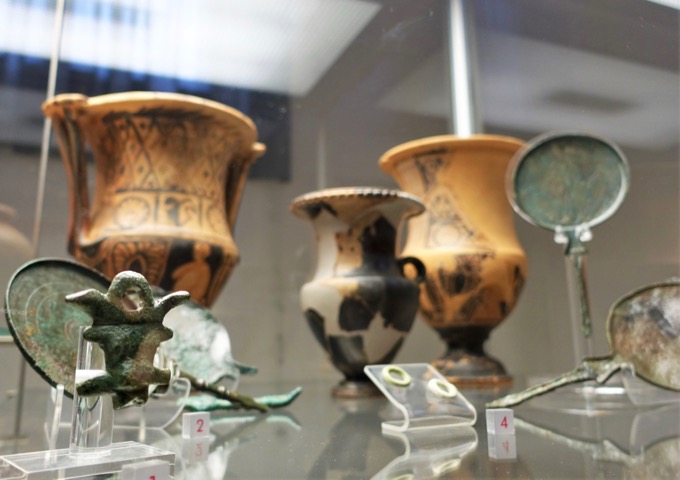
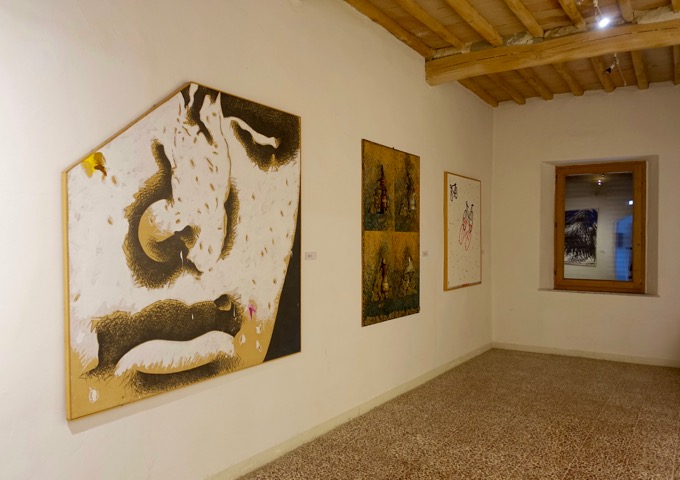
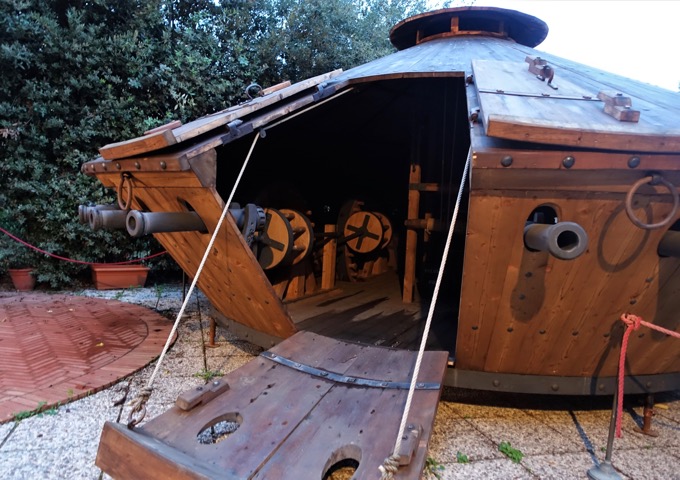
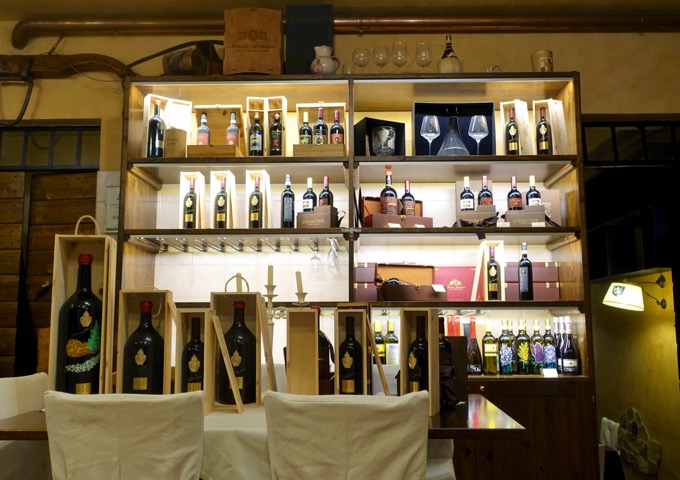
About Santorini Dave